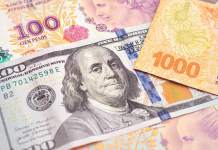Gold and Copper Centerfold of the Global Commodity Crisis
July 25 (King World News)
Dr. Stephen Leeb:
Gold and Copper could not be more different in a broad definition of commodities. While gold has very few industrial uses – about 10% of its mined output – copper is the most widely used industrial metal. Both metals are destined for the stars. But their flight will come from different although deeply interconnected reasons.
While copper (and other real assets) will be the catalyst, gold will very likely produce greater gains as its role will be to allocate the coming scarcity of virtually all commodities, ironically because even the 10% of gold used in industry can be substituted. Gold will shed its dual role as commodity and currency. The assurance of a constant and slightly growing supply is one condition for a currency that backs up all others. The other is that the currency be valued solely on characteristics not connected with its industrial uses. Gold for reasons I will leave to Plato and other philosophers has been valued for millennia because of intrinsic beauty and deep association with anything of value.
Copper is often called Dr. Copper because of its critical applications in a wider range of industries than other commodities. A number of factors point to a severe scarcity in copper over the decades and concomitantly to a severe scarcity in energy and many other commodities. Without worldwide cooperation we will not be able to cope with these scarcities, and without a worldwide monetary system that can carefully manage worldwide growth, humankind will face threats it has never faced before.
According to the website Geology.com, as of 2019 building construction in the U.S. accounted for 43% followed by electronics and transportation at 20%, while consumer products and machinery accounted for the remainder. The Copper Alliance estimates that worldwide, the values are a bit different with building and construction accounting for less than 30%, while infrastructure, not even mentioned as a separate category for the U.S., accounts for at least 25%, transportation 13%, and electronics and other uses the remainder.
The differences between the distribution in worldwide totals and U.S. totals speaks to the burgeoning need for copper in the developing world relative to the developed world. This trend is going to accelerate in the years ahead…
Gold and Copper Macro Outlook
Here are just a couple of macro statistics that tell a lot about the challenges ahead. Since the end of 2001, copper has climbed six-and-a-half fold, or 550%, outperforming virtually every other asset. This includes a 100 percentage-point advantage over the 450% total return in the S&P 500. Only gold is about equal to copper.
The extraordinary price gains in copper come with another statistic that should make us worry – a lot. Those soaring prices came with soaring demand. But demand is only part of the story. Copper supply is the other half. As copper demand climbs, more money is available to develop copper reserves. These reserves can be expanded either through deeper digging in existing mines or exploration and the development of new mines. A moderately healthy situation would be one in which rising prices are enough to keep reserves relatively constant.
Instead, however, during the past 20-year period, according to the USGS, copper reserves declined from an estimated 52 years of production to under 40.
Some will say 40 years of reserves – that is still a lot. Unfortunately, what counts is not the number of years but whether that number is rising or falling. In the past 20 years, yearly declines in reserves averaged 0.6 years, or over 7 months. That still would not be much to worry about if the rate of demand for copper was going to slow. Instead, for at least two major reasons growth in copper demand is nearly certain to accelerate and accelerate dramatically. At the same time creating new reserves will likely become much harder and expensive – perhaps unaffordable.
For more than 60 years through about 2010, the total economy of the developed world with only 15% of the world’s population represented, on average, well over 50% of the world’s economy. Moreover, often during that period, the developing world, despite its much smaller base for growth, grew much more slowly than the developed world.
Today the developing world is not only larger than the developed world but is growing much faster. That point of inflection, reached in about 2010, gave the developing world for the first time the kind of heft it needs to become much more than an afterthought in the economic landscape. The developing world has income per capita of about 20% of the developed world, giving it tremendous room for further growth. Its ever growing importance in the world economy suggests that accelerating rapid relative growth is inexorable. That means sharply accelerating demand for the basics ranging from copper to energy to virtually all other commodities.
Global Commodity Crisis
Growth in the developing world is only one of the major reasons to expect sharply increasing copper demand. The world is embarking on creating probably the biggest industry in the history of mankind. Call it the green revolution and begin to think of copper as Dr. Green. In our last interview I spent some time talking about this transition to renewable energies. The costs of creating this industry, which will involve the deployment of more infrastructure than we probably built in the past century, will be enormous. For example, China the world’s largest consumer of copper, devotes about half its copper consumption to developing a massive electric grid. This means that 25% of the world’s copper consumption is currently dedicated to developing an electric grid in China.
Not only does China have much further to go in its grid development but the rest of the world has barely started. In an article that appeared in the well-respected IEEE Spectrum, the authors quote a leading grid expert, Gregory Reed at the University of Pittsburgh: “China’s UHV grid puts it far ahead of the rest of the world. They’re investing significantly, and they’ve gone right to the highest levels of technology capability from day one. There’s no comparison anywhere else in the world. It’s like we’re all still pedaling our bicycles, while the Formula 1 race car goes flying by.”
An electric grid that can accommodate renewable energies will be just one source of increasing copper demand. EVs are another. EVs require massive amounts of copper, many times that of gasoline powered cars. While internal combustion engines (ICEs) are powered by chemical reactions, EVs are powered by electrical transmission, which requires a great deal of copper wiring. And wiring is only part of copper EV story. Copper’s most important role in EVs is in storing electricity, i.e., the battery. Bloomberg estimated that the demand for copper in lithium-ion batteries will climb from 2 million metric tons in 2020 to 14 million metric tons in 2030, about 70% of 2020 copper production.
Green Revolution
Virtually all aspects of the ‘green revolution’ point to gigantic increases in copper production, which will come on top of the copper needed for accelerating growth in the developing world. One major question is where this copper will come from.
An often-overlooked fact about copper is that it is one of the most energy-intensive metals to produce and that the need for energy increases as a function of declining copper grades as more and more copper is mined. The average grade of today’s working mines is a little north of 0.5 percent per ton. Several scientific studies show that 0.5 percent per ton is a point of inflection at which the amount of energy needed starts to rise exponentially as the grade continues to fall…
Evidence for this was presented at the 7th International Conference on Computers Communications and Control (ICCCC). Several researchers study changes in energy consumption at several mines that are part of Chile’s massive Codelco company, the world’s largest copper producer. In the 14 years between 2001 and 2015, as copper production grew by about 14%, the energy needed to produce the copper grew by 60% in an ever steepening curve.
The prospects of exponential gains in copper’s price raise serious question not just about going green but about overall worldwide growth. There are virgin mines that, if developed, would provide major copper supplies at much higher grades and much lower cost. Some of the most significant of these mines are located in Africa and in particular in the Democratic Republic of the Congo. It would require massive infrastructure – from mine development to transportation – to develop these supplies. This infrastructure, of course, will require massive amounts of copper. The world is perilously close to an existential vicious circle.
There obviously is a strong relationship between copper and energy and between everything that makes the infrastructure necessary for the green revolution possible and energy. This relationship between energy and creating a new and prosperous world is made much more perilous by calls from climate activists – calls that are resonating with policy makers – to limit future supplies of fossil fuels. These are extraordinary short-sighted views.
I urge everyone to listen to the science and its limitations. We are not dealing with a political issue. One book I strongly recommend (in addition to my own “China’s Rise and the New Age of Gold”) is “Unsettled: What Climate Science Tells Us, What It Doesn’t, and Why It Matters.” The writer is Steven Koonin, a former undersecretary for science in the U.S. Department of Energy in the Obama/Biden administration. Koonin, who was the provost at Caltech for nearly a decade and widely recognized as one of the world’s leading climate scientists, makes a strong case that when it comes to climate change, we know little to nothing. Climate change could peak this year or end up being worse than we expect, but under all reasonable cases it doesn’t pose an existential threat. The same cannot be said about potential resource shortages.
Gold’s 10-Fold Move And A Commodities Market On Fire
One point I want to make in this interview is that when I forecast a many-fold long-term target for commodities like copper and a 10-fold or even greater target for gold, these are not just crazy numbers to get attention. Rather they come from well-documented evidence that is in front of all of us. Unfortunately, not all of us are looking in the right places.
The bottom line is that commodities and especially gold, which promises to soar whether we succeed or not in transitioning to energies more plentiful and green, have to be part of your portfolio. The only question is how much should you own. China’s digital e-yuan brings gold closer to center stage and creates ever more desperation in the U.S. and parts of the West. That desperation combined with renewed Covid scares could create volatility, providing the gift of a buying opportunity to take advantage of. On a hopeful note we pray this desperation will lead to cooperation and the potential for a world more focused on gain than blame.


















